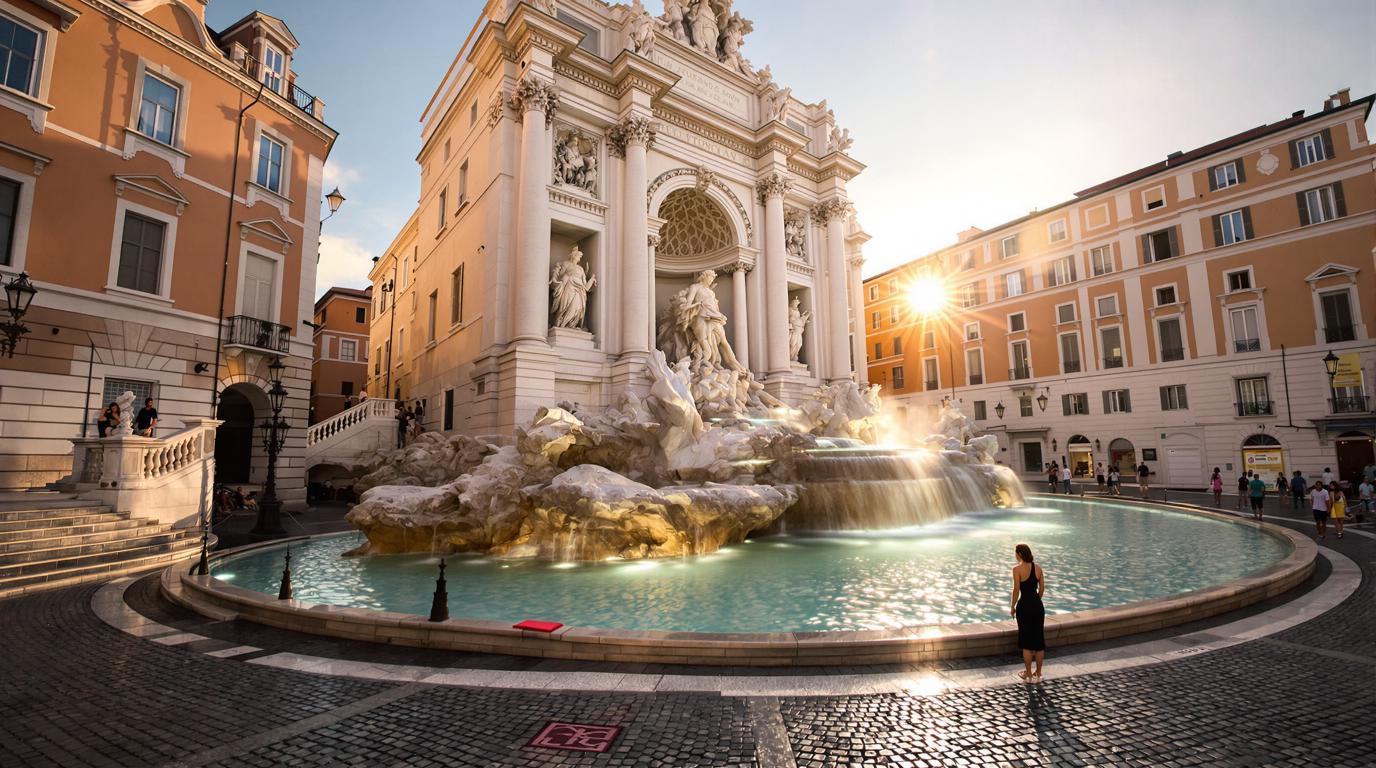The Eternal City beckons with a siren call that has captivated travelers for millennia. Rome sits at coordinates 41.9028° N, 12.4964° E, a sprawling testament to human achievement where ancient ruins stand shoulder to shoulder with Renaissance masterpieces. This UNESCO World Heritage Site in Italy’s Latium region isn’t just a destination—it’s a time machine where past and present dance together in streets paved with stories.
Where empires echo through cobblestone streets
Rome’s historic center contains more ancient wonders per square foot than perhaps anywhere on earth. The Colosseum stands as a weathered giant, its arches framing slices of blue Italian sky. Nearby, the Roman Forum whispers tales of senators and emperors who shaped Western civilization. Unlike evolution’s natural laboratory in the Galapagos, Rome represents humanity’s greatest cultural experiment.
The city where throwing coins ensures your return
At the Baroque marvel of Trevi Fountain, over €3,000 in coins splash into its waters daily. Local legend promises that tossing one coin ensures your return to Rome, two coins promise new romance, and three predict marriage. The ritual originated centuries ago when ancient Romans tossed coins into water sources to ensure safe passage.
“Rome wasn’t built in a day, but it sure feels like you need more than a lifetime to fully explore it,” says Marco Rossi, a third-generation Roman tour guide.
Where a country exists within a city
Vatican City, the world’s smallest sovereign state, dazzles with St. Peter’s Basilica and Michelangelo’s masterpiece in the Sistine Chapel. The spectacular dome offers panoramic views that rival those of Kyoto’s Golden Temple for sheer beauty. Early morning visits before 9 AM provide a rare moment of tranquility with these treasures.
A food scene that invented culinary perfection
Roman cuisine elevates simplicity to an art form. In neighborhood trattorias, carbonara comes alive with nothing more than eggs, pecorino, guanciale, and black pepper. Meanwhile, supplì—fried rice balls with molten mozzarella centers—make the perfect street food. Unlike the exotic fish of Lake Baikal, Rome’s cuisine focuses on transforming humble ingredients into extraordinary experiences.
The neighborhood where real Romans live
Cross the Tiber River to Trastevere, where laundry flutters across narrow streets and locals chat from balconies. This neighborhood pulses with authentic Roman life—its piazzas fill with students and families each evening as the golden hour bathes ochre buildings in warm light. Hidden churches like Santa Maria in Trastevere hide glittering Byzantine mosaics behind unassuming facades.
“Trastevere is Rome with its makeup off—beautiful, confident, and completely itself,” explains Francesca Conti, local culinary historian.
Where water has flowed for millennia
Rome’s ancient aqueducts still feed some of the city’s 2,500+ public fountains, many dating back centuries. The nasoni (big noses) fountains provide free, fresh mountain water throughout the city. This engineering marvel rivals even France’s breathtaking Verdon Gorge in demonstrating humanity’s ability to shape natural landscapes.
The coffee ritual that defines Roman mornings
Romans take their coffee standing at neighborhood bars, knocking back espressos with practiced efficiency. The morning ritual rarely takes more than three minutes but represents a sacred pause in the day. Unlike Kinshasa’s vibrant coffee culture, Rome’s caffè is about precision and tradition.
Rome doesn’t just preserve history—it lives within it. Its stones have witnessed the rise and fall of empires, the brush strokes of artistic geniuses, and the footsteps of countless pilgrims and wanderers. To walk these streets is to join an unbroken human procession stretching back thousands of years, each visitor adding their own small chapter to the eternal story of the city that taught the world what civilization could be.
